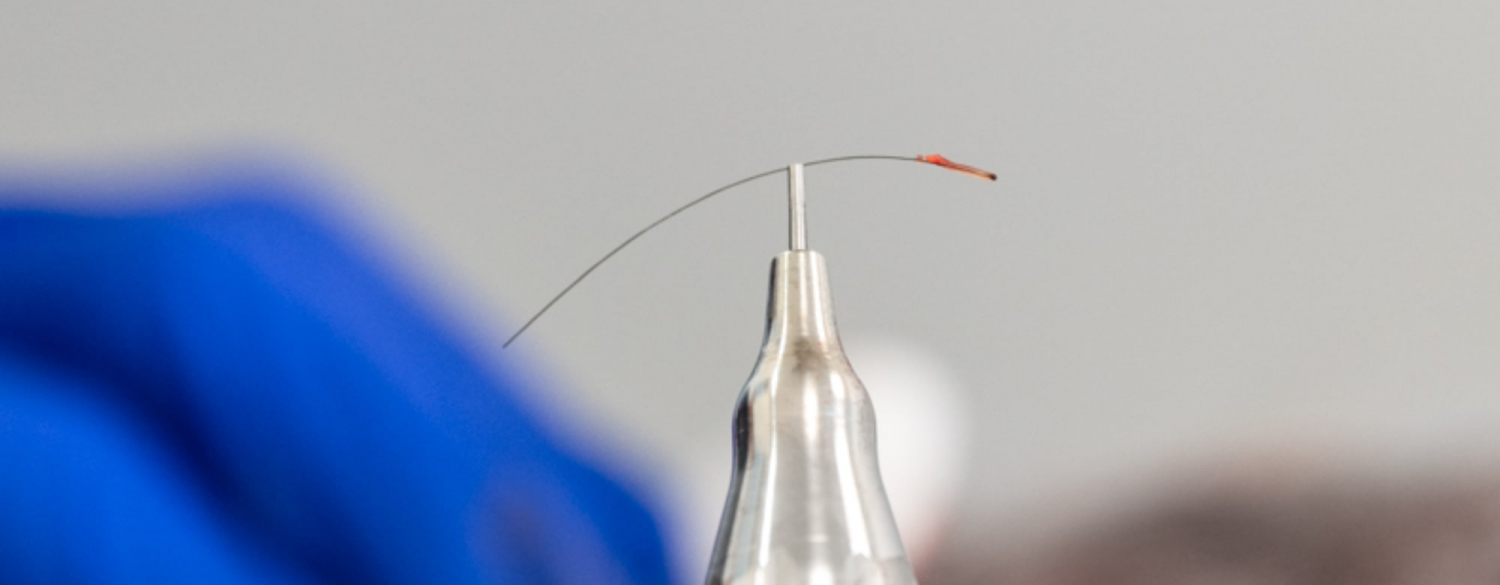LONG HAIR FUE hair transplant


Hair transplant
LONG HAIR FUE
The long hair transplant, FUE LONG HAIR transplant, is an innovative and modern technique that allows for a natural, discreet and scar-free result. In addition, you have the possibility of resuming your socio-professional activities the day after the procedure thanks to this technique.
If you are losing your hair or suffering from alopecia or baldness, you have the opportunity here, by browsing these few lines, to learn about the FUE LONG HAIR transplant.
Why choose a long hair transplant? How is your first consultation session going? What are the different stages of a FUE LONG HAIR transplant? What results can be expected? What are the advantages and disadvantages? What are the post-operative consequences?
We help you learn more about FUE LONG HAIR transplant in order to help you make a free and informed choice.
Why undergo a FUE LONG HAIR transplant?
In order to provide a definitive and aesthetic solution to hair loss, there are now many hair transplant techniques. The technique of micro grafts or follicular units with long hair (FUE LONG HAIR) is one of the techniques that we practice, at our NHT Europe centre. We opted for FUE LONG HAIR for various reasons.
This is the most discreet procedure and therefore the easiest for the patient to accept: it does not in any way change the appearance immediately after the procedure.
LONG HAIR FUE is highly effective thanks to the large number of hairs harvested in a single operation (up to 2,000 or 2,500 grafts in a single day, for trained teams), making it possible to permanently reduce a large number of alopecias without shaving the scalp. As with the technique involving shaving the entire scalp, we can carry out large-scale transplants of 5,000 to 6,000 grafts over several consecutive days.
This is an essential technique for transplanting eyebrows. Harvesting the hair at its full length allows the curvature to be preserved, and once transplanted the hair will follow the shape of the face, avoiding a bushy appearance.
To sum up, the most important advantage is that there are no immediate traces of the operation, enabling patients to resume their social and professional activities immediately. This is a major advantage for women, who can envisage a hair transplant more easily.
How does the first consultation session for a FUE LONG HAIR transplant take place?
The first medical consultation is a very important step.
During this first session, we are at your disposal, we ask you about your needs, your expectations and your desires. The main objective is to guide you towards developing a coherent and realistic project.
We pay particular attention to the donor area (harvesting area) as well as the recipient area (implantation area). This is a crucial step; measuring the thickness of the hair and the average number of hairs per follicular unit allows us to determine the number of grafts required for the desired correction.
This consultation lasts 1 hour to 1 hour 30 minutes. This is a very important step in our centre.
We will also develop your treatment plan with you and explain the advantages and disadvantages of this procedure (duration of the procedure, price, post-operative care and time of social exclusion).
You will see, during this first consultation session, we will work together to find the optimal solution to meet your expectations. We do not influence any of our patients and take into account everything that is crucial to us in a hair transplant. We may even have to advise against a hair transplant depending on the results of your medical examinations.
What are the different stages of a FUE hair transplant?
The first step is to perform local anaesthesia, by applying an anaesthetic cream and a few injections of local anaesthetics to the donor area.
The second step is to take the grafts from the back of the head, at what can be called the "crown area"; unlike the old techniques which made it possible to take long hair by cutting out a strip on the scalp and which required a suture, harvesting is carried out with a punch and a suction-equipped micro-motor; it leaves no visible scar. An assistant constantly keeps the other hairs out of the way during the harvesting process.

View of a Long Hair Graft
Repeated readjustment of the hair on the back part of the head (harvesting area) is essential (technique which requires more people to assist in procedure).

During the third step, a meticulous inspection under a microscope, of the harvested grafts is performed.

Then it is time to move on to the last step: implanting the grafts. In order to create a natural effect, the follicles are implanted irregularly using sharp implanters, which allows better control over the orientation of these grafts.
The implantation technique is slightly different from that of short hair transplants; work progresses front to back, unlike short hair transplants (back to front progression). Several sessions are sometimes necessary to cover large areas. A maximum of 2500 grafts can be implanted in one session.
With the FUE LONG HAIR technique, it is easy to select any type of hair; thin or thick, light or dark.
The operation takes longer, around 30% longer, and obviously depends on the number of grafts implanted.
To practice this technique, it is important that the whole team is experienced, as the procedure is more difficult and longer than an FUE with shaving. This is the reason why few centres practice it. It is also more expensive than the other procedures.
What results can you expect from a FUE LONG HAIR transplant?
It will take about six months before being able to evaluate the results of the micro-grafts. A second procedure can then be considered if necessary.
While the long-term result can be assessed in the first days since the transplanted hair has a normal length, this benefit is short-lived because the short or long transplanted hair falls out from the 15th day.
Particular care when shampooing will be necessary, because while short hair does not get tangled, it is different for long hair and the risk of pulling out grafts while trying to disentangle it is real in the first days following the graft (detangling agents may be useful).

Appearance of the donor area after harvesting
What are the postoperative consequences of a FUE LONG HAIR transplant?
As a result of the operation, a small scab will form on each implant. It will fall off 8 to 10 days after the procedure. It will be necessary to wait until the third month to see the first hair grow back. It may be necessary to repeat two to three sessions in order to achieve the desired hair mass.
This kind of procedure avoids shaving the hair, so long hair will hide the harvest site as well as small scabs on the transplanted area. This technique allows our patients to return to their professional activities very quickly without visible signs of the operation.
You may wash your hair with shampoo the day after the operation. Particular care should be taken when styling as there is a certain risk of graft extraction during the first few days if the hair is tangled. The use of detangling conditioner is recommended.
The use of pain relievers is rarely necessary. It will be possible to resume sports activity from the second week following the operation.
Oedema (swelling) can appear around the eyes around the 3rd postoperative day following a graft on the frontal area. The size and duration vary from one patient to another, but it takes on average between 1 and 4 days for the swelling to disappear. It is harmless, painless and occurs in 10% of cases.

Before and after harvesting without any shaving

Before and after implantation
What are the advantages and disadvantages of an FUE Long Hair transplant?
THE ADVANTAGES OF FUE (LONG HAIR)
The puncture scars are invisible. The harvesting area is completely undetectable the day after the procedure.
Up to 2500 grafts: this is the number of grafts that we can reasonably transplant in one session.
Resuming professional activity is faster.
DISADVANTAGES OF FUE (LONG HAIR)
The procedure is longer, more difficult and more expensive.
It requires a great mastery of FUE, and this is the reason why few teams offer it.
But as with the standard FUE procedures, which seemed very difficult at first, medical teams will become more accustomed to performing this procedure. It may even become the standard type of hair transplant in the future.
The essential information
- No visible evidence of graft harvesting on the back of the head and great discretion over the grafted area.
- Immediate preview of the final result.
- Early resumption of social life.
- Implanted hair falls out from the 15th day.
- Possible need to use hair detangling conditioners for styling.
- Risk of graft extraction in the first days after the procedure.
- Longer procedure (therefore fewer grafts per session) and more expensive.
TYPE OF ANESTHESIA: local
AVERAGE DURATION OF THE PROCEDURE: it depends on the number of grafts (maximum 2500 grafts per day)
DONOR AREA: occipital, parietal or temporal
SHAVE LENGTH: None
RESUMPTION OF SOCIAL ACTIVITY: Immediately
RESUMPTION OF SPORTING ACTIVITY: after 10 days
Please note that the NHT center is closed from August 4 until August 24 inclusive.
An answer will therefore be provided to you by a doctor from the center as soon as it reopens.
NHT EUROPE


